Last Updated on July 21, 2022
Your RV’s maximum appliance runs on a 12V DC current. The main shore power source in your RV is 120V AC. With AC power, you will not be able to operate any appliances or devices that require more than 12V DC power.
A converter can help in this situation. The converter takes 120V AC power and changes or converts it into 12V DC power.
This will enable you to run any device or appliance that requires 12 volts of DC power. In the event that the converter malfunctions, you will need to find a way how to bypass RV converter.
You will then have the power you need to operate your appliances and electronic devices. We will discuss the step-by-step process for bypassing the converter.
How Does an RV Converter Work?
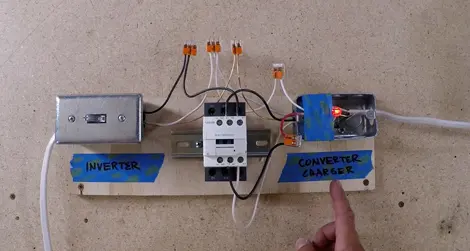
Knowing how the converter works will give you a better understanding of how to bypass it. The converter is usually located in the cabinet near the electrical panel.
It consists of a transformer that changes or converts the 120-volt AC power into 12v power in DC format. This power is then distributed to different appliances and devices in your RV that require 12 voltage DC power to function.
What is the Purpose of Bypassing the RV Converter?
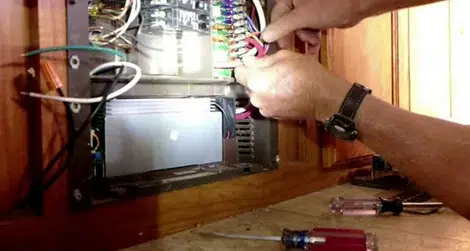
Bypassing the converter is usually done as a temporary measure. It will allow you to get the power you need to run your appliances and devices without having to use the converter. Here are some situations where you might need to bypass the converter:
1. Converter Malfunction
The converter malfunctions can be frustrating, especially when they happen at the most inopportune times. However, there are a few reasons why RV converters might malfunction.
First, the converter might be overloaded. This can happen if too many devices are plugged into the converter or if the RV is parked in an area with poor electrical service.
Second, the converter might be faulty. A manufacturing defect or simply wear and tear could be the cause.
Third, the converter might be damaged by a power surge. This can occur if lightning strikes nearby or if the RV is plugged into an outlet that isn’t properly grounded.
Ultimately, any of these factors can lead to the converter malfunction. When this happens, you will need to find a way to bypass the power converter.
2. Running Low on Power
Another reason why you might need to bypass the converter is if you are running low on power. This can happen if you have been using a lot of power-hungry appliances or if you are parked in an area with poor electrical service.
When you run low on power, the first thing that you should do is conserve power. Turn off any unnecessary lights and appliances. If this doesn’t work, then you will need to find a way to get more power.
One way to do this is to bypass the converter. This will allow you to tap into a different power source, such as a generator or an external battery bank.
3. Temporary Power Outage
You may also need to bypass the converter in the event of a temporary power outage. This can happen for a variety of reasons, such as severe weather or construction in the area.
When this happens, the first thing that you should do is conserve power. Turn off any unnecessary lights and appliances. If this doesn’t work, then you will need to find a way to get more power.
This can be accomplished by bypassing the converter. In this way, you can tap into a different power source, such as a generator or external battery.
How to Bypass RV Converter : Step-By-Step Process
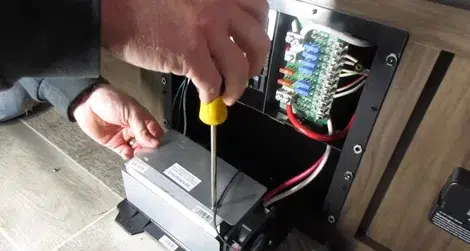
Now that you know when and why you might need to bypass the converter, we will discuss the step-by-step process for doing so. This process is relatively simple and can be done in a short time.
Step 01: Gather the Necessary Supplies
Before you begin, you will need to gather the necessary supplies. For this project, you will need a screwdriver, wire strippers, electrical tape, and solar panels.
Step 02: Locate the Converter
After you have gathered the necessary supplies, the next step is to locate the converter. The converter is usually located in the cabinet near the electrical system panel.
Step 03: Disconnect the Power Source
Once you have located the converter, the next step is to disconnect the power source. To do this, simply unplug the RV from the campground electrical service. If you are using a generator, turn off the generator.
Step 04: Remove the Cover From the Converter
After you have disconnected the power source, the next step is to remove the cover from the converter. The cover is usually held in place by screws. Use a screwdriver to remove the screws and set them aside.
Step 05: Locate the Positive and Negative Wires
After you have removed the cover, the next step is to locate the positive and negative wires. These wires are usually color-coded. The positive wire is usually red, while the negative wire is usually black.
Step 06: Disconnect the Positive and Negative Wires
Once you have located the positive and negative wires, the next step is to disconnect them. To do this, simply loosen the screws that secure the wires to the converter. Once the screws are loose, you can remove the wires.
Step 07: Setup Solar Panels
After you have disconnected the power source and removed the wires from the converter, the next step is to set up the solar panels. The solar panels are a great way to bypass the converter. They provide free energy and will never run out as gas or diesel would.
Step 08: Connect Positive and Negative Wires to Solar Panel
After you have set up the solar panels, the next step is to connect the positive and negative wires to the solar panel with a bypass switch. To do this, simply loosen the screws that secure the wires to the converter. Once the screws are loose, you can remove the wires.
Step 09: Cover the Connection With Electrical Tape
After you have made the connection, the next step is to cover it with electrical tape. This will help to protect the connection from the elements.
Step 10: Enjoy the Free Energy
After you have made the connection and covered it with electrical tape, the final step is to enjoy your free energy.
Safety Precautions When Bypassing the Converter
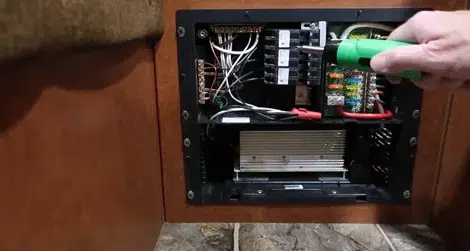
Now that we have gone over the step-by-step process for bypassing the converter, we will discuss some safety precautions that you should take. These safety precautions are important to keep in mind when working with electrical equipment.
- Never work on electrical equipment while it is plugged in. This can be extremely dangerous and can result in serious injury or death.
- Always disconnect the power source before working on electrical equipment.
- Make sure that you know where the positive and negative wires are before working on electrical equipment.
- Be sure to cover any exposed wires with electrical tape to prevent shorts.
- If you are not comfortable working with electrical equipment, it is best to leave it to a professional.
- By following these safety precautions, you can ensure that your experience bypassing the converter is safe and fun.
What Is the Difference Between an RV Inverter and Converter?
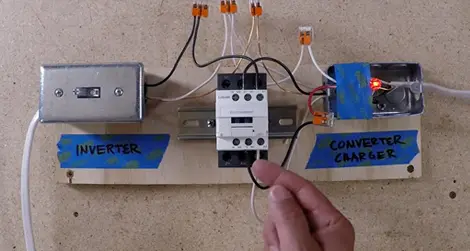
Both devices serve an important purpose in powering your RV, but they work in different ways. An RV inverter converts DC power into AC power. In order to operate appliances that need AC power, you will need an RV inverter.
The converter does the opposite, it converts AC power into DC power. In order to power devices that require DC power, such as your RV lights, you will need this power source. They both play an important role in powering your RV, but they function differently.
Will an RV Converter Work Without a Battery?
If you are plugged into a shore power source, the converter will work without a battery. However, if you are not plugged into a shore power source, your converter will not work without a battery.
The battery provides the power necessary to operate the converter when there is no shore power available.
What are the Symptoms of a Faulty RV Converter?
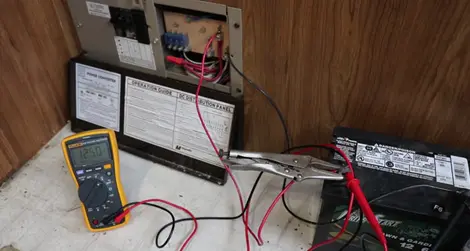
When the converter is not working properly, there are a few things you might notice. Below are a few symptoms of a faulty converter:
1. Lights In Your RV are Dim or Flickering
When the converter is not working properly, the lights in your RV will be dim or flickering. This is because the converter is not providing enough power to operate the lights.
2. Appliances Are Not Working Properly
Another symptom of a faulty converter is that appliances in your RV are not working properly. This can include things like the fridge and microwave. This is because the converter is not providing enough power to operate these appliances.
3. Converter Is Too Hot to the Touch
If the converter is hot to the touch, this is another symptom of a problem. This is usually caused by a faulty wire or connection. If you notice this, it is important to have the converter checked by a professional.
Frequently Asked Questions:
There are a few questions that we get asked often about the converter. Below, we will answer a few of the most frequently asked questions.
1. Is It Safe to Bypass the Converter?
Unless in case of emergency, it is not recommended to bypass the converter. This is because you are working with electrical equipment, and it is important to be careful when working with this type of equipment.
If you are not comfortable working with electrical equipment, it is best to leave it to a professional.
2. How Long Will a Converter Last?
The converter can last for many years as long as it is properly maintained. However, if it is not properly maintained, it can decrease in performance over time. It is important to check the converter regularly and make sure that all connections are tight and secure.
3. Can an RV Converter Be Repaired?
Yes, the converter can be repaired. However, it is important to note that this is a complex piece of equipment, and you should contact a qualified professional if you are not comfortable working with electrical appliances. If the converter is beyond repair, it will need to be replaced.
4. Should I Leave the Converter on All the Time?
You should not leave your converter on all the time. This is because it can lead to the converter overworking and decrease its lifespan. It is best to only use the converter when you need it and to turn it off when you are not using it.
Conclusion
The converter is a necessary piece of equipment for any RV. We hope that you fully understand how to bypass RV converter. It is now very simple for you to bypass the converter. Make sure to always be careful when working with electrical appliances. This will help you extend the lifespan of your converter.
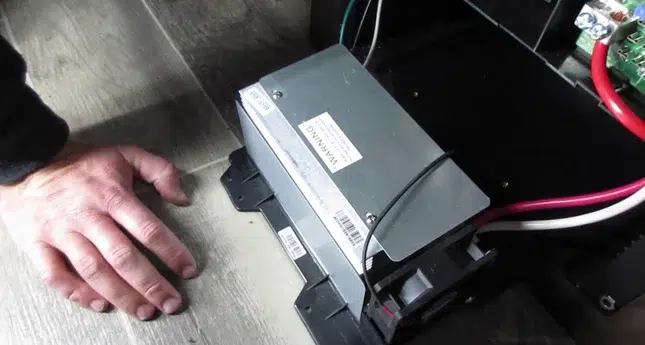


Hello,
i have watched your video to bypass the converter. i just wanted to see if you might have a better solution for me before i run out to buy another breaker.
a bit about my set up.
1. I have a solar set up with 3 12 volt batteries
2. my solar charges these batteries in half a day
3. my inverter is 3500 watts
4. i plug my ac plug from the trailer into the inverter
5. breaker for converter must be off for #4 to work
6. with that breaker off my trailer lights are only running off the main battery at the front of the trailer, i assume this is the same for the fridge and furnace
i am not very knowledgable about how the electrical works in the trailer. but biased on your video adding the by pass breaker am i to assume everything will then work off the inverter?
Thank you for any help you may be able to provide
Yes. 🙂